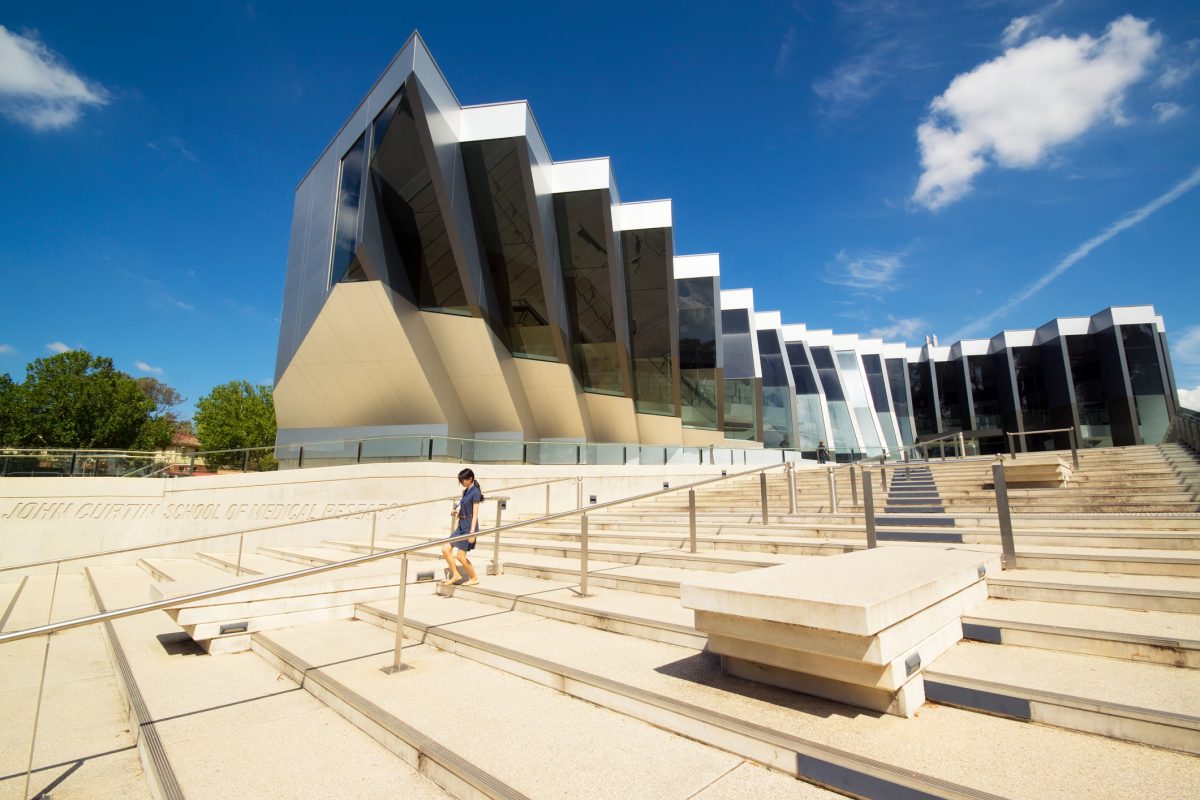In a first for the country’s tertiary institutions, the Australian National University is adopting a more-holistic admissions system that considers co-curricular activities alongside academic results. For Australia’s IB Diploma Programme (DP) students, the changes may make an already auspicious qualification even more valuable. DP graduate of Pembroke School and student at the Australian National University, Nick Bradman, shares his take on the support IB provides college-bound students.

“What these changes ultimately reflect is universities’ growing awareness of the value in experience outside the classroom, and knowledge outside a textbook.”
For Australia’s high-school leavers, 99.95 is a coveted number. It represents the highest-attainable score in the Australian Tertiary Admissions Rank (ATAR), a national system which orders students’ academic performance by a relative percentile rank of 0–99.95. An ATAR is generated through completion of one of Australia’s state curricula, or by conversion from an IB diploma score—with 45 being equivalent to 99.95. Until now, this top score has meant guaranteed access to any of Australia’s leading universities, with admissions based almost solely on applicants’ ATARs. However, from 2020, this is changing—at least for one top Australian University.
For those applying to the Australian National University (ANU), which sits atop Australia’s QS World University Rankings, students will now need more than just a high ATAR. However, for IB students, there will be no need to worry.
Beginning next year, a new system of admission at ANU will introduce a ‘co-curricular or service requirement’, obliging students to meet a minimum number and range of extra-curricular activities. Once a minimum ‘threshold’ is reached, students will then be granted entry based primarily on their ATAR—such that doing more than the threshold will not provide an advantage. The array of activities to be considered includes: community service and volunteering; sports and physical activity; artistic or musical pursuits; school leadership; part-time work and certain scholastic competitions.
For IB students, the DP’s Creativity, Activity, Service (CAS) Programme will make satisfaction of the threshold a fait accompli (already complete). For instance, playing a musical instrument and undertaking team sport would satisfy the minimum requirement. Alternatively, undertaking service work such as volunteering for a registered charity would, in itself, be sufficient. In effect, any IB student, through their CAS Programme, would meet this threshold.
While many state-curriculum students would also satisfy this requirement, such curricula do not formally contain a CAS equivalent. IB students, therefore, are the only high-school graduates for whom certain fulfilment of this threshold is ‘built-in’ to their qualification.
ANU’s changes could be a further fillip to this popularity. One reason prospective candidates sometimes eschew the DP is a misconception that, in Australia’s ATAR-driven system, the additional commitment of CAS will detract from their studies. Even though the extra-curricular threshold set by ANU is relatively low, formalising it as a requirement validates the worth of those activities and might “make students think twice about the value of CAS”, says Gabi Walldorf-Davis. In consequence, these changes may augur well not just for IB students, but the DP itself. Of course, the extent of this benefit will ultimately depend on the success of ANU’s own experiment—and whether other universities decide to emulate or expand it.
Of course, I believe the benefits of CAS extend not just to admission to university, but to helping students thrive in it. Rather than detracting from students’ current studies or professional prospects, extra-curricular activities should be a boon to them. For one thing, having a world outside academia encourages you to maintain a balance in your life and manage your time well. This not only becomes essential in handling the demands of tertiary study, but also in enabling you to take full advantage of the opportunities university can bring. ‘Well-rounded’ is an epithet often attributed to IB graduates, and for very good reason.
“IB students, therefore, are the only high-school graduates for whom certain fulfilment of this threshold is ‘built-in’ to their qualification.”
The other attributes and attitudes that CAS develops, through its ‘learning outcomes’, are also valuable to any university student. These are abstract qualities, broader than any specific skill—such as perseverance, a willingness to undertake challenges and an ability to collaborate with others. The IB does not necessarily expect you to become a professional soccer player, world-class pianist or dedicate your life to charitable causes. But it does want you to develop the personal and interpersonal skills that come with playing team sport, persevering with a talent and thinking of others. “The IB is ahead of the curve in recognising the importance of these soft skills”, says Gabi Walldorf-Davis, IB Coordinator at Pembroke School in South Australia. “It is encouraging to see ANU recognise them too.”
What these changes ultimately reflect is universities’ growing awareness of the value in experience outside the classroom, and knowledge outside a textbook. Brian Schmidt, the Vice-Chancellor of ANU, seems to agree. “We want broad students”, he says. “Students able to work across disciplines, cultures and people, who can adapt to changing circumstances and new challenges”. Without introducing an overly onerous hurdle, he hopes that introducing this co-curricular requirement—and moving away from selection based on “ATAR and nothing else”—will help signal this to schools and students. While acknowledging that the full IB diploma is not for everyone, the Vice-Chancellor concludes that the synergy of a “broad academic programme and broad co-curricular experience”, means that high-achieving IB students “do fit into the mould of what we want at ANU”.
Even without the added-value of these changes, the DP is already a propitious qualification for Australian students. In the November 2018 session, the average Australian IB score was 33.2, well above the world average of 28.6. Despite accounting for just 15% of candidates, Australia also produced 47% of the world’s perfect scores. These translate into a powerful tertiary passport in Australia. Achieving just the average Australian score of 33.2 equates to an ATAR of about 91—sufficient for entry to around three-quarters of ANU’s undergraduate courses.
Australian DP students’ impressive results also help explain the surge in the IB’s popularity. Although state curricula remain dominant, the number of IB DP candidates swelled to 2700 in 2018—up over 200% in the previous decade.
Vice-Chancellor Schmidt is optimistic that ANU will be a bellwether for Australia’s other leading institutions. Speaking publicly about the changes, he described them as ‘trailblazing’. Whether other universities do decide to follow this path may be the ultimate test of success. If there are further changes of this kind, IB students can rest assured that they will be well-equipped to face them. For now, the future of Australia’s IB graduates, and the DP itself, looks bright.

Nick Bradman is an IB Diploma graduate of Pembroke School in Adelaide, Australia. He is now studying a Bachelor of Laws and a Bachelor of Politics, Philosophy & Economics at the Australian National University. Nick has a particular interest in politics, and is currently working at the Australian Senate in Canberra. You can connect with him on LinkedIn here.
To hear more from Diploma Programme (DP) graduates check out these IB programme stories. If you are an IB grad and want to share your story, write to us at alumni.relations@ibo.org. We appreciate your support in sharing IB stories and invite you to connect with us on LinkedIn, Twitter and now Instagram!
If you enjoyed this story, consider reading more below:



